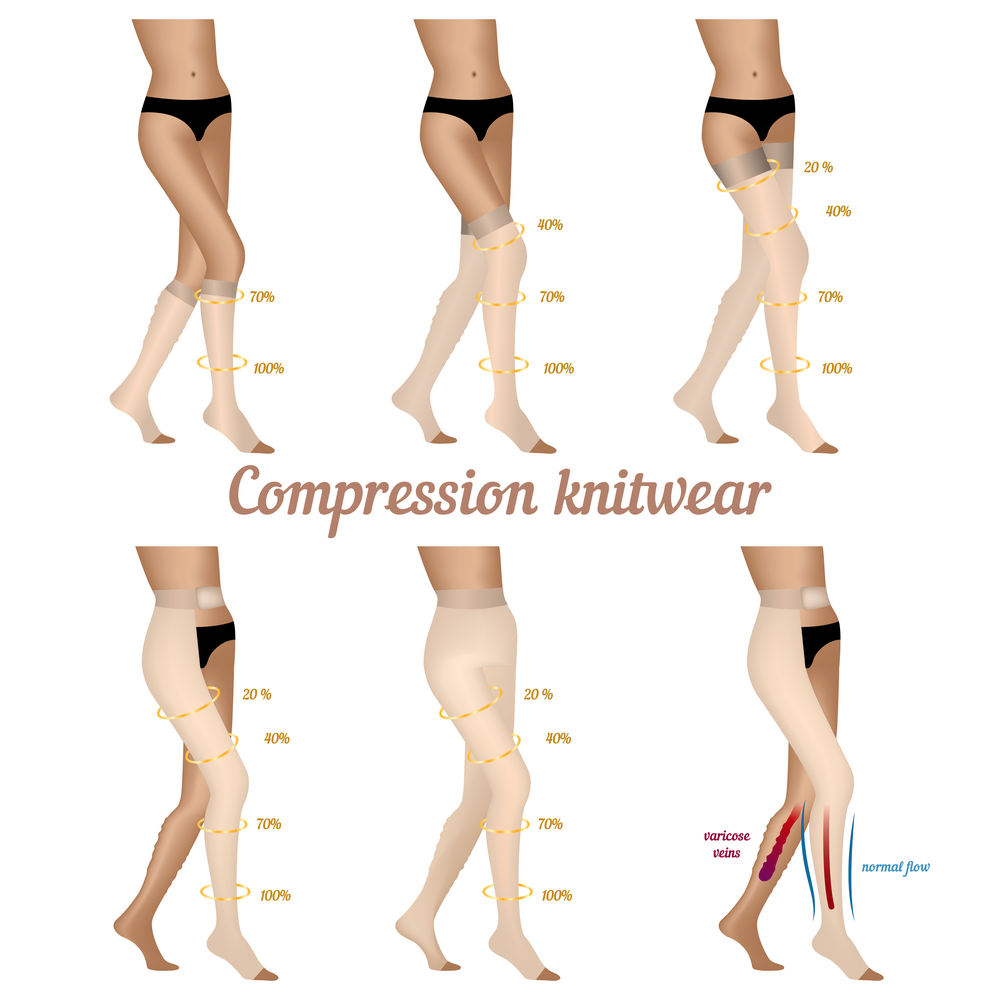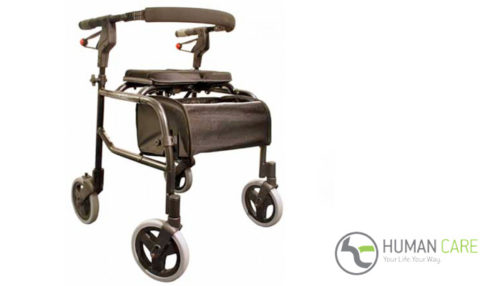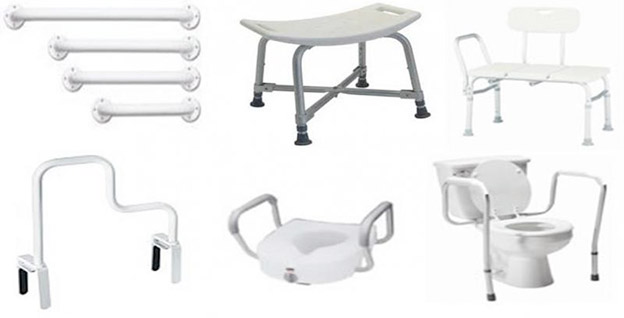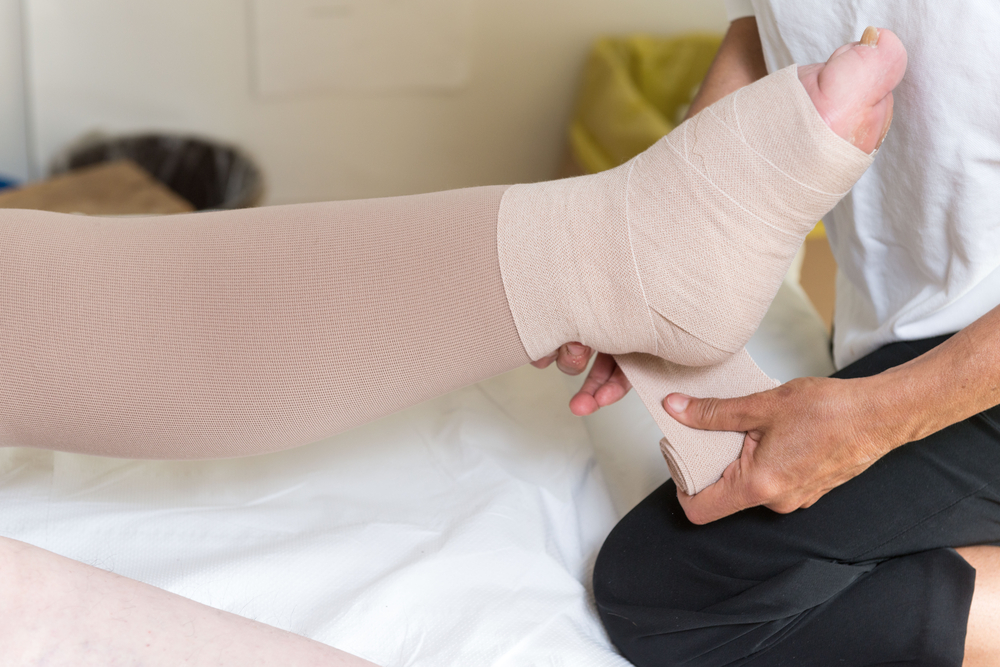Everything You Need to Know About Compression Garments

Do you suffer from sore and tired legs? Are you constantly on your feet or sitting for prolonged periods of time? Then compression garments may be a great fit for improving your health and your life. Keep reading to find out everything you need to know about compression garments.
What is Compression Garments?
Compression therapy is an external application of a garment that applies controlled pressure to an extremity. This controlled pressure helps to increase the movement of the venous and lymphatic systems. There are different types of compression garments for different situations including socks, stockings, panythoses, and sleeves.
Who Needs Compression Therapy?
There are many different people who require compression garments. There is a common misconception that compression garments are only for older people. This is not the case. Compression garments are used for:
- Frequent Travelers
- Pregnant individuals
- Elderly individuals
- Varicose veins
- Ankle swelling
- Edema buildup
- Individuals working on their feet or sitting for long periods of time
- Athlete’s
- Post-surgery to prevent blood clots
If you fall into one of these categories, you may benefit from having and using a compression garment. We suggest talking to your primary health care physician. If they recommend you purchase a compression garment, contact the team at ADAPT Home Health Care. our team will work to find you the perfect compression garment to improve your blood flow and your life.
Why Do Compression Garments Do?
There are many different people who need compression garments to remain happy and healthy. There are also many different reasons why people need compression garments. Compression garments help increase venous blood flow, decrease venous blood volume, decrease reflux in diseased superficial and deep veins, and much more.
At ADAPT Home Health Care, we offer compression garments for several different circumstances, ailments, and lifestyles. Regardless of the reason, our team of experts will assist you in finding the ideal product for your situation.
How to Care for Compression Garments?
If you own compression stockings, it is important that you learn how to care for them. The better care you take of your compression stockings, the longer they will last! We suggest that you always hand wash your compression garments. After you have washed them and ensured all soap has been removed, you should lay them flat to dry. We also suggest that you wash your compression garments after each use, to prevent the build up of bacteria and sweat. In order to keep your compression garments for as long as possible, we suggest that you do not cry clean them or put them in the dryer. If you follow these steps, your compression garments will last months longer than if you don’t!
Our Products
At ADAPT Home Health Care, we carry a wide variety of compression garments at our three locations across the Greater Toronto Area. Some of the brands that we carry include:
-
Sigvaris
-
Mediven
-
TruForm
-
Jobst
-
Juzo
-
Solaris/Lymphedema Depot
All of the compression garments that we carry are made specifically for each body part and each body type. It is critical to the function of a compression garments that it fits right. If a compression garment fits properly, the swelling can be controlled. At ADAPT Home Health Care, we have certified compression fitters who can provide you with a custom compression garment!
What are the Benefits of Compression Garments?
There are several different benefits to compression garments. Some of the benefits of using a compression garment includes:
-
Reducing swelling
-
Increasing circulation
-
Increasing sport performance
-
Relieving tired and achy legs
-
Preventing varicose veins
-
Preventing blood clots post surgery
All of the above listed complications are extremely serious. If you require compression garments, it is important that you visit a certified compression fitter to get your custom compression garment as soon as possible. Waiting to get a compression garment can result in serious complications which will be discussed below.
What Happens If I Don’t Purchase Compression Garments?
It is not uncommon that someone who has been told by a healthcare professional to get a compression garment, does not purchase one. There are several reasons why people choose not to purchase a compression garment, including the fact that they don’t think the consequences are severe enough. This decision has several potential consequences, including those listed below.
Enlarged Limbs and Infections
One of the consequences of not wearing a compression garment when a health care professional has suggested that you do, is enlarged limbs and infections. Without the compression garment to increase the blood flow, the affected area can quickly get worse.
Clots
If you choose to not wear compression garments after being advised to do so, clots can form. The pressure that is applied with a compression garment causes blood to circulate which keeps it from pooling or from clotting.
Pulmonary Embolisms/Strokes
Another way that not wearing a compression garment can affect your health is the potential development of pulmonary embolisms or strokes. These complications can arise because when blood pools deep vein thrombosis can occur. This can lead to pulmonary embolisms as well as strokes. Compression garments can make your blood circulate which can eliminate the pooling of blood and therefore these secondary complications.
Heart Attacks
Another complication of not wearing compression garments when you are advised by a healthcare professional to do so is a heart attack. If the compression garment is not being used to keep the blood moving, you can have heart failure or a heart attack.
As listed above, there are several different health consequences of not getting a compression garment when you are advised to do so. They may not be ideal or stylish, but they can prevent several serious health complications.
Tips & Tricks
Compression garments are fitted to your body and therefore can oftentimes be difficult to put on and take off. At ADAPT Home Health Care, we have certified Medical Equipment Specialists who can provide you with formal training. We also have some tips and tricks that you can use at home to make the process easier!
The first step is ensuring that the compression garment is the right size for you. In order to ensure this, you must have your compression garment fitted by a certified compression fitter. Not sure where to find certified compression fitters? ADAPT Home Health Care has certified compression garment fitters on staff!
Once you have the proper sized compression garment, we suggest using rubber gloves to put them on. This will help extend the lifetime of the compression stockings. When you are putting on the compression garment, pinch the end and turn it inside out. You can then roll up the compression garment and roll it on. After the garment is on, you can use your rubber gloves to prevent any bunching.
The ADAPT Home Health Care Difference
Once you have decided to get your compression garments, the next step is to visit ADAPT Home Health Care.
When you arrive at one of our three locations located across the Greater Toronto Area, you will begin the process by discussing your unique situation with one of our certified compression fitters. We will then work together as a team to find the perfect compression garment that works for your condition and your lifestyle. Once you have decided on a style and brand that works for you, we will provide you with all the necessary information!
At ADAPT Home Health Care, your health is our number one priority. We work with you from the beginning to the end, and beyond! If you have any questions, just contact us today! Our team is more than happy to answer any of your questions, comments, or concerns.
- Adapting the Workplace for People with Disabilities - December 2, 2020
- More About Rollators and The NeXus 3 - March 26, 2020
- Bathroom Safety 101 - March 12, 2020

 905-822-1614
905-822-1614



